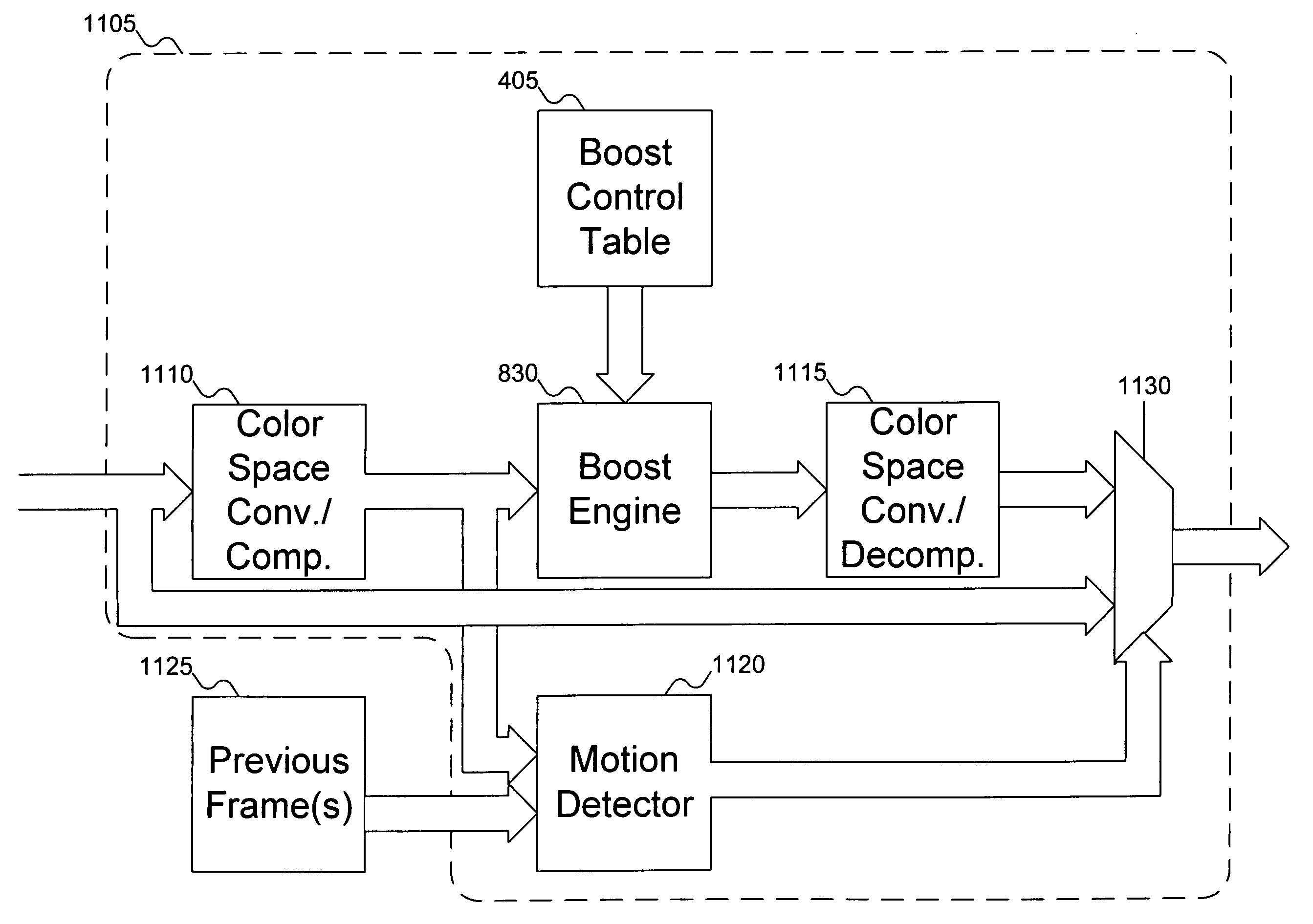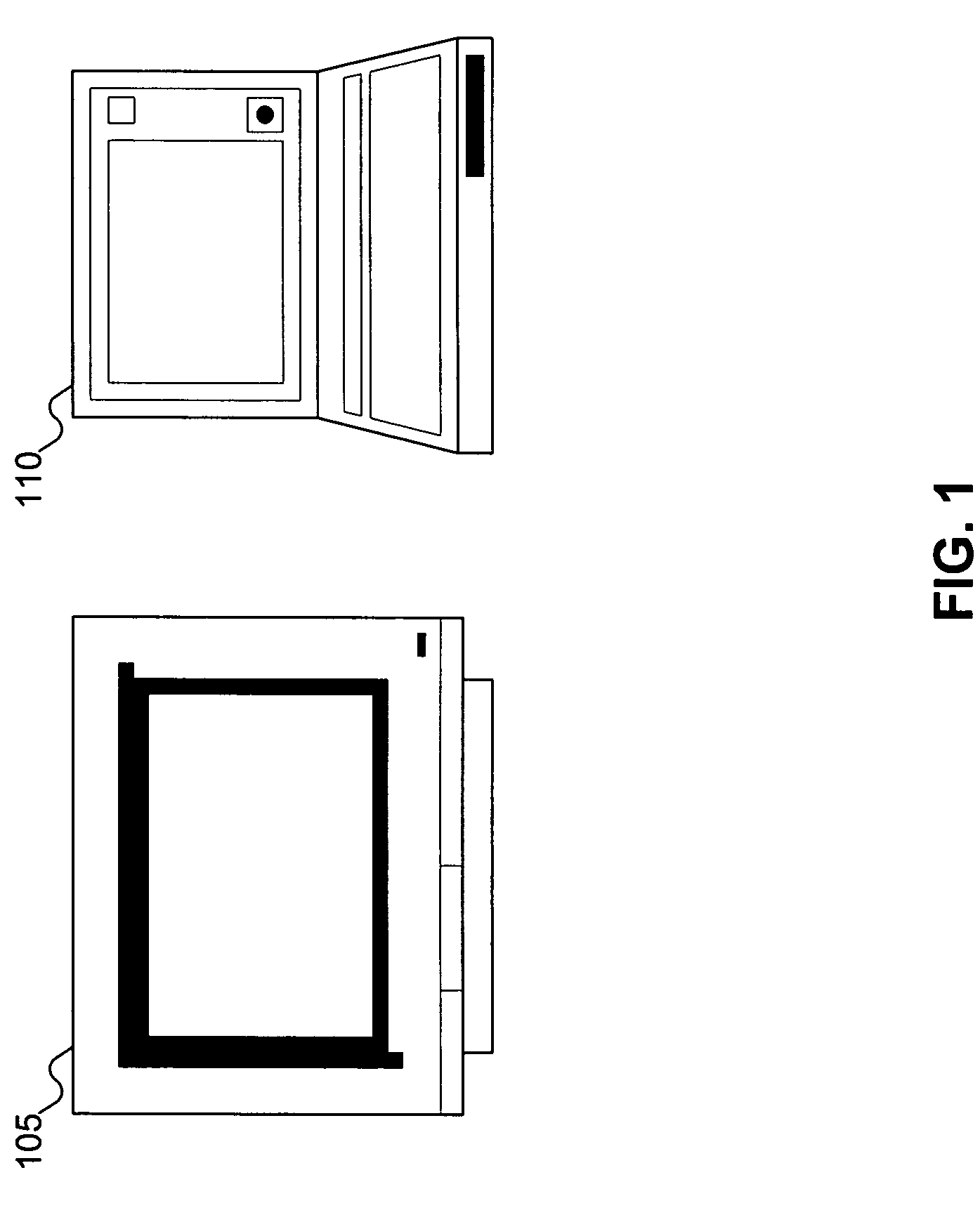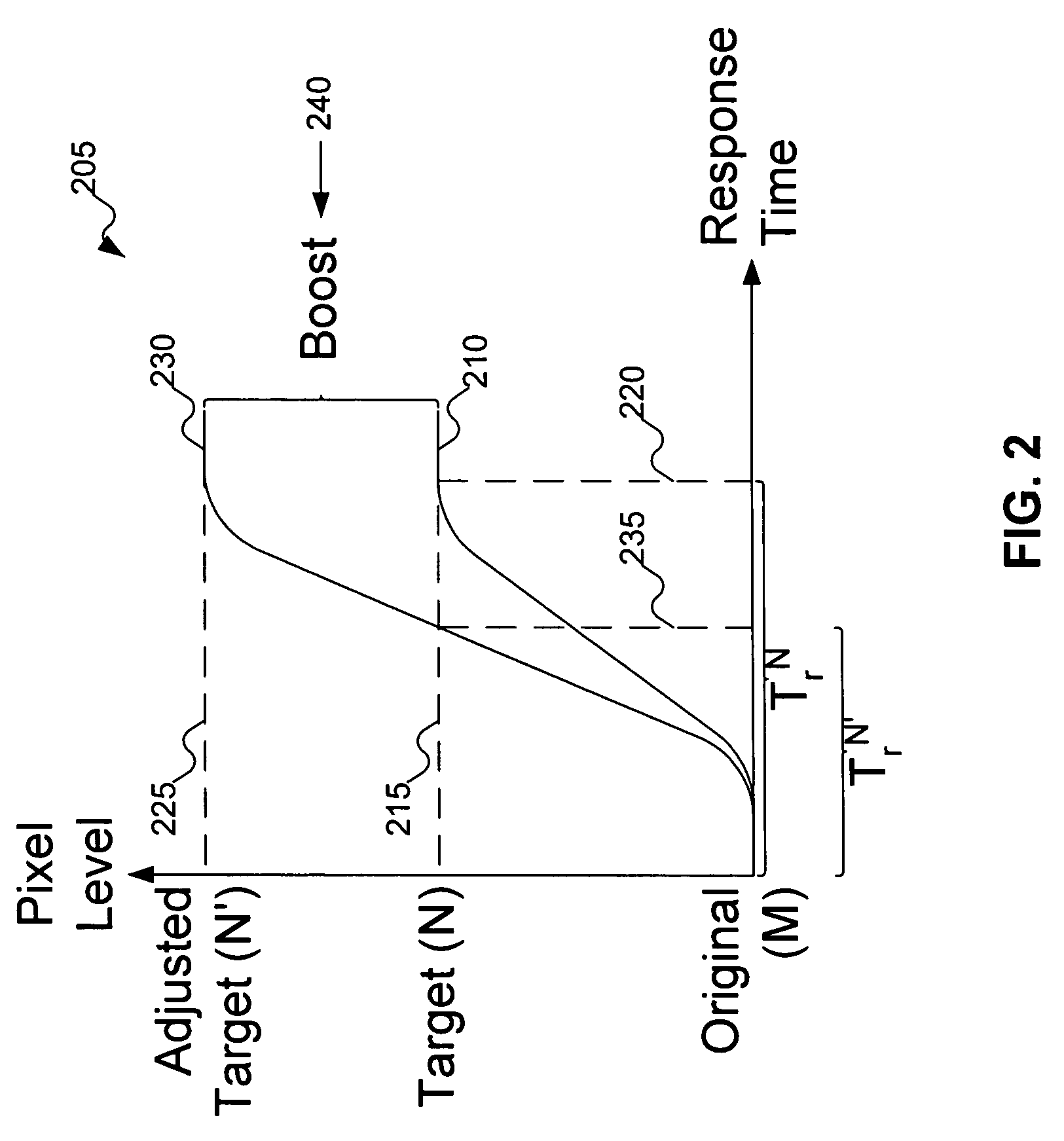Motion adaptive pixel boost with data compression and decompression
a technology of data compression and decompression and pixel boost, which is applied in the field of improving the performance of liquid crystal displays, can solve the problems of model lcds being their viewing angle, lcds usually cost more than a comparably sized crt,
- Summary
- Abstract
- Description
- Claims
- Application Information
AI Technical Summary
Benefits of technology
Problems solved by technology
Method used
Image
Examples
Embodiment Construction
[0025]FIG. 1 shows devices to which embodiments of the invention can be adapted. FIG. 1 shows display 105 and laptop computer 110. Display 105 can be a computer monitor, or it can be a television display. Display 105 and laptop computer 110 are not necessarily connected; they are simply examples of devices that can benefit from the improved pixel response that is a consequence of the invention. Display 105 and laptop computer 110 (more specifically, the display built in to laptop computer 110) are typically devices using Liquid Crystal Display (LCD) displays, but a person skilled in the art will recognize that other devices that might benefit from embodiments of the invention. Examples of pixelated displays that might benefit from embodiments of the invention include active and passive LCD displays, plasma displays (PDP), field emissive displays (FED), electro-luminescent (EL) displays, micro-mirror technology displays, low temperature polysilicon (LTPS) displays, and the like for u...
PUM
 Login to View More
Login to View More Abstract
Description
Claims
Application Information
 Login to View More
Login to View More - R&D
- Intellectual Property
- Life Sciences
- Materials
- Tech Scout
- Unparalleled Data Quality
- Higher Quality Content
- 60% Fewer Hallucinations
Browse by: Latest US Patents, China's latest patents, Technical Efficacy Thesaurus, Application Domain, Technology Topic, Popular Technical Reports.
© 2025 PatSnap. All rights reserved.Legal|Privacy policy|Modern Slavery Act Transparency Statement|Sitemap|About US| Contact US: help@patsnap.com



